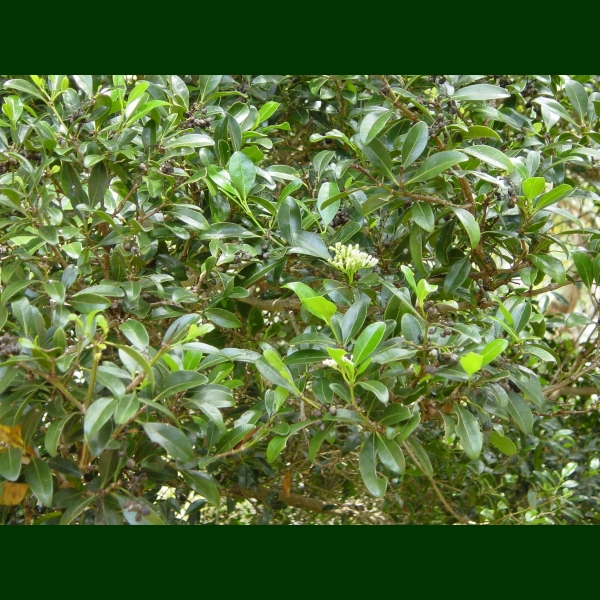 Hawaiian Name(s): alahe‘e, walahe‘e, ōhe‘e
Hawaiian Name(s): alahe‘e, walahe‘e, ōhe‘eScientific Name: Psydrax odorata
Vernacular Name: none
Family: Rubiaceae
Status: indigenous
Authority: (G.Forst.) A.C.Sm. & S.P.Darwin
Description: Shrub/small tree, to 7m.
Habitat Found in dry shrubland, dry to mesic forest, and dry slopes; rare in wet forests 10–860 (1160) m most main islands (Wagner et al. 1990:1119, as Canthium odoratum).
Medicines:
Non Medicinal Uses: Durable wood used as cutting tool on softer woods and for farming tools, shark hooks, bait sticks (charred over fire); leaves for dye (Krauss 1993:25, Little & Skolmen 1989:296; Rock 1913:437; Wagner et al. 1990:1118); one of the hardest woods (Abbott 1992:12) that was fashioned into adzes (Kamakau 1976:122); sticks to keep pot lids open (Malo 1951:22). In the Ethnology Collection at Bishop Museum there is a post-contact example of the wood made into a bowl.
Specific gravity of wood: unknown
Famous Locations:
Mele:
`Ōlelo Noeau:
Dye Color and Parts: Black (leaves)
Kino lau:
Location on Bishop Museum Kalihi Campus:
Propagation Information: Intermediate (Bornhorst 1996:15; Bornhorst and Rauch 1994:57–58; Culliney and Koebele 1999:50–53; Nagata 1992:1993 addendum).
Hawaiian Native Plant Propagation Database.
Native Plants Hawaii.
Seed: Seed length approximately 6 mm. Photograph: B.Kennedy.

